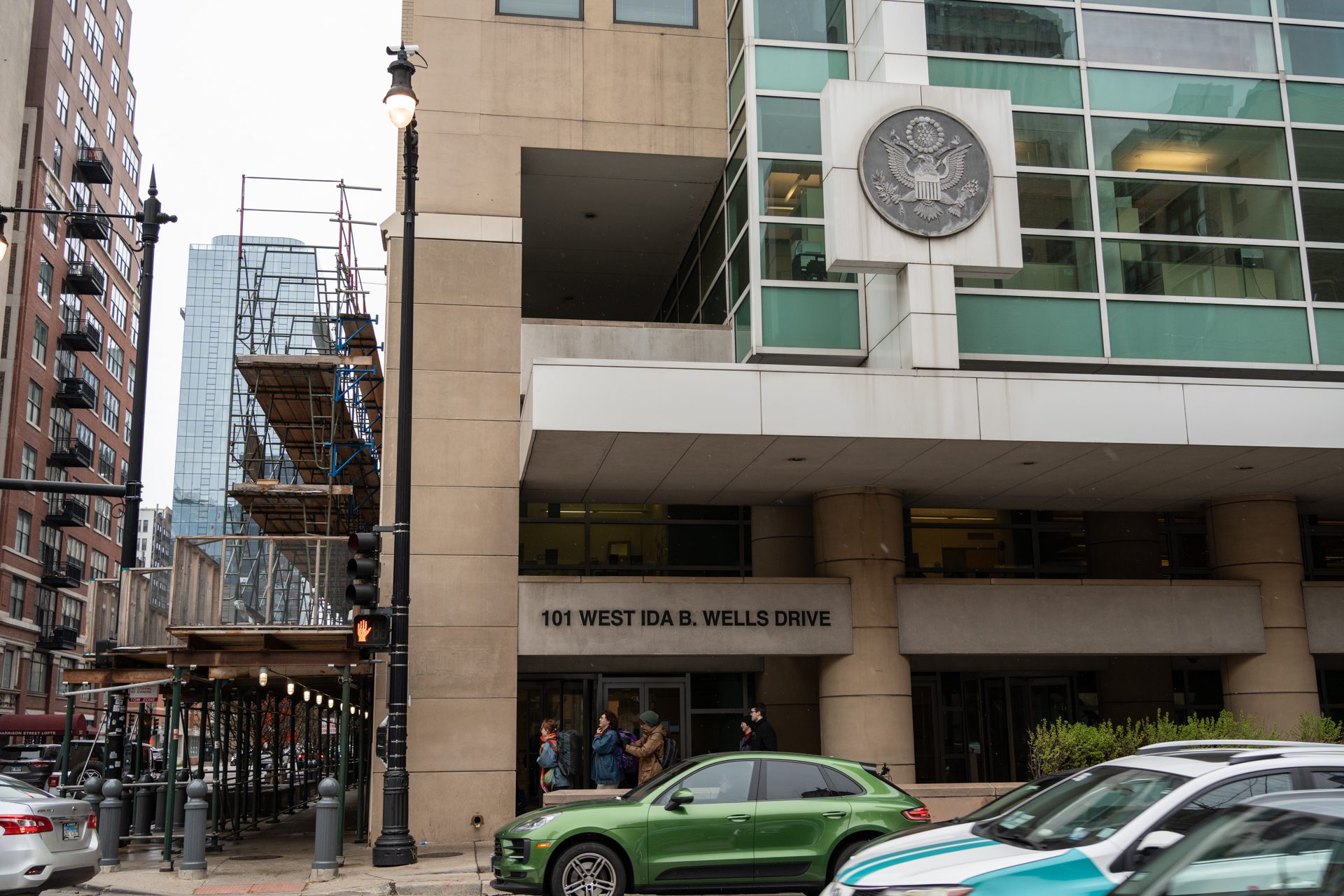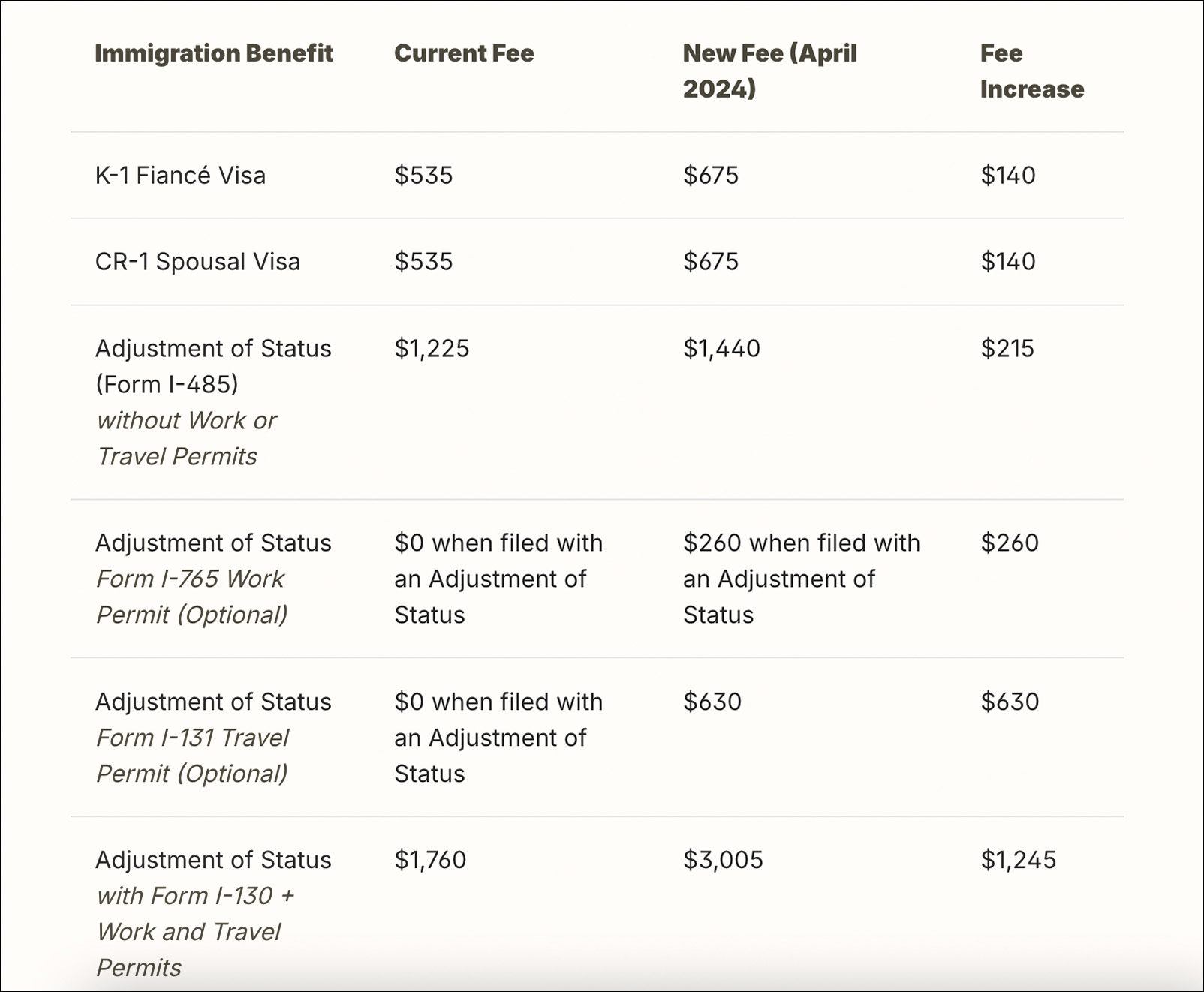 Max Herman/Borderless Magazine
Max Herman/Borderless MagazineFor the first time in seven years, the United States Citizenship and Immigration Services is increasing application fees for several individual, family, and employer applications.
The United States Citizenship and Immigration Services (USCIS) will increase fees for some immigration and naturalization applications next month — the first fee hike since 2016. These changes, which go into effect on April 1, include new rules for waiver eligibility, additional exemptions and significant increases in price for certain forms like the application for lawful residence, working permits, and travel permits.
The USCIS states that 96% of its funding comes from form filing fees, and the other 4% comes from congressional appropriations. According to their website, the department said the fee increases are needed to cover mounting costs over the years and to help avoid the accumulation of future backlogs.
News that puts power under the spotlight and communities at the center.
Sign up for our free newsletter and get updates twice a week.
In a press release on February 9, 2024, the USCIS said the agency completed an “unprecedented 10 million immigration cases in fiscal year 2023” and “reduced overall backlogs by 15%”. However, the historic median processing times still paint a picture of inadequacy, with some forms averaging more than five years to process.
“It’s kind of like a Ponzi scheme — they are using new money to pay for old work,” said Hector Quiroga, a federal litigation attorney specializing in immigration law. Quiroga is an immigrant himself who came to the U.S. at the age of 17.
While he sees the price increases as a necessity in some ways, Quiroga also acknowledges that the “system is really broken,” and these increases won’t do much to fix that.
An Expensive Process Gets Costlier
The April 1 update will affect nearly all USCIS applications, with family and employment-based applications seeing the most substantial increases.
One of the most significant changes is the unbundling of the green card application — or application for lawful employment. Since 2008, the filing fee for form I-485 has covered the cost of the travel and work permits. The new fee structure has broken out the fees totaling $2,330, which includes($1,440 for form I-485, $630 for the travel permit application and $260 for the work permit application — up from $1,225.
“For individual filers, the final rule generally limits newly established fees to no more than the increase in the Consumer Price Index since 2016, which is 26%,” according to USCIS’s website. “Many such fees will increase by well under 26%.”
However, the increase in these three applications is over 90% since the work and travel permits, previously free when filed in tandem with the application of lawful residence, now cost $260 and $630, respectively.
An aggregation of the most common application increases for individuals and families is shown in the figure below.

As shown in the table, other increases fall within that 26% maximum, including the standalone green card application fee and the fiancé visa. However, a 26% increase to each application means a family filing for immigration will incur thousands of fees before the process begins.
“The real issue here is that typically we have families that are applying, so you have two children plus your spouse, so you’ve got a times three multiplier,” said Quiroga. “It’s very difficult for families to be able to come up with that kind of money, and that doesn’t count for the attorney or any other expenses that you’ll have in the process.”
Because immigration is a civil issue, legal representation is not a guarantee. Quiroga estimated the total price of an individual immigrating to the U.S. — including forms, lawyers, and other fees — to be anywhere from $3,000 to $20,000, as unique factors and situations can make a case much more costly.
“[These increases are] going to affect everybody, and especially put a strain on a lot of families,” said Ana Navarro, a member of Organized Communities Against Deportation. “Parents are going to have to say, ‘either we fix our papers right now and we continue the process, or we pay rent or buy food or take our kids to the hospital, or we get their medication.’”
Navarro has had a U visa application pending since February 2022 and knows the process of filing for citizenship is both long and expensive. The median processing time for Navarro’s visa in 2023 was nearly five years, according to the USCIS historical processing.
Read More of Our Coverage
Supporters of the fee changes believe these increases will help reduce processing times and backlogs. At the same time, opponents see the increases as a financial obstacle that creates significant barriers and discourages legal immigration.
Navarro agrees. “The government complains that people don’t work and everything. But when we’re really trying to do it the legal way, they’re putting so many hurdles into doing it,” she said.
There are fee waivers when an individual cannot afford the application fee, but Quiroga said these applications can take longer.
“The government not only has to review the application, but they have to review whether or not you qualify for a fee waiver,” Quiroga said. “Is it worth it to wait another year or two?”
Fee Decreases for Victims and Survivors
Not all of the fee changes occurring in April are increases.
According to the new rule, one of the most requested changes was increased fee exemptions — rather than waivers — for humanitarian-related requests.
The new fee structure will expand fee exemptions to include applications for victims of trafficking (T visa), crime (U visa), survivors of abuse by U.S. citizen or legal permanent resident family members (VAWA), and for juveniles who have been abused, abandoned, or neglected by one or both parents (Special Immigrant Juvenile Status).
Currently, USCIS offers waivers, rather than exemptions, for individuals in these dangerous situations. To prove eligibility, individuals must prove they fall at or below 150% of the Federal Poverty Guidelines.
“I think this is definitely the most positive change that we see [in the new fee structures] based on the clients we serve,” said Karolyn Talbert, associate director of legal services at the National Immigrant Justice Center.
Read More of Our Coverage
In many of these cases, people have a hard time gathering documents because they might not have control or access to proof of their household income or expenses, said Talbert. But, these exemptions were added to assist in alleviating the burden on victims in vulnerable situations.
“All of our clients are at or below 200% of the poverty line, so in general, most would have qualified for fee waivers, but the barrier was trying to prove it, and this eliminates that barrier,” Talbert said.
Additionally, eligibility for fee waivers has expanded to allow parents to submit proof of their children’s receipt of means-tested benefits for consideration. Means-tested benefits are public benefits, like food stamps and Medicaid, where eligibility and/or the benefit amount is based on family or personal income and resources. Previously, this was only allowed in the case of adult receipt.
USCIS also gives a $50 discount to online application filings, but Talbert said this isn’t necessarily good.
“This is a disadvantage to those applicants who might not have reliable access to the internet, or the ability to create a new online CIS account — which has a lot of room for improvement,” said Talbert.
The Deadline Approaches
As April 1 nears, immigrant advocacy groups recommend those looking to submit applications do so as soon as possible before fees increase next month. The USCIS said they will not give a grace period and that all applications postmarked on or after April 1 will be subject to the new fee structure.
These fee changes are estimated to bring in $4.42 billion in revenue annually to USCIS, more than $1 billion each year than the previous fee schedule.
But Quiroga isn’t confident this will be enough to make significant changes to the “completely overwhelmed” system.
“What we really need is a comprehensive reform that will have a budget to be able to properly adjudicate these cases,” said Quiroga. He hopes that with all the attention that has been put on the migrant crisis lately, politicians will have no choice but to step in to help fund the USCIS and other entities that are attempting to assist with immigration.
“I think once we take all the chatter and all the politics out, I think everybody wants a safe country and a country that also welcomes new ideas,” he said. “‘The land of opportunity’ really is the infusion of ideas and investment, and human capital that is so needed for the country.”
You can find all of the USCIS fee adjustments and a list of frequently asked questions here.

